THIRD COLOMBIAN FILM INDUSTRY BULLETIN
A project designed by Proimágenes using methodology of Fedesarrollo.
Download the full special report on excel.
5. III SPECIAL REPORT
Colombian Short Films Under Film Law 814 of 2003
INTRODUCTION
The goal of this report is to review national short film statistics from 2007 through 2011 based on official information provided by the Ministry of Culture’s Film Office, especially in light of Law 814 of 2003.
The Film Law created mechanisms to stimulate production and strengthen national and international promotion of Colombian short films that include:
Production Incentives
- Film Development Fund – FDC- incentives
- Tax incentives for those that donate and/or invest in film projects
Promotion Incentives
- Film Development Fund –FDC- incentives to projects that participate in international festivals and meetings.
- Discounts on the Film Development Quotas for the exhibitors when national short films are screened.
This sample is based on short films registered with the Ministry of Culture’s Film Office in order to obtain certification as a national product, a requirement for films seeking tax and promotion incentives and, particularly, exhibition in theaters.
A total of 167 short films were certified as national products between 2007 and 2011; 108 of them have screened in theaters and 35 have participated in international festivals and meetings. Of the 46 short films to receive FDC grants based on their technical and artistic quality, only five were certified and only one screened in theaters.
The majority of the short films produced in the country are never certified, either because they fail to comply with exhibitors’ preferences for theater release (minimum length of ten minutes; documentary in nature and suitable for all ages) or because they choose not to apply for additional incentives. Many of these films have therefore not been included in this sample.
There is a great need for mechanisms with which to measure and evaluate the true behavior and performance of short film production in Colombia and to come up with alternatives for more effective and inclusive diffusion and promotion.
The following official statistics for Colombian short films are based on those films that have received the aforementioned incentives and have screened in theaters.
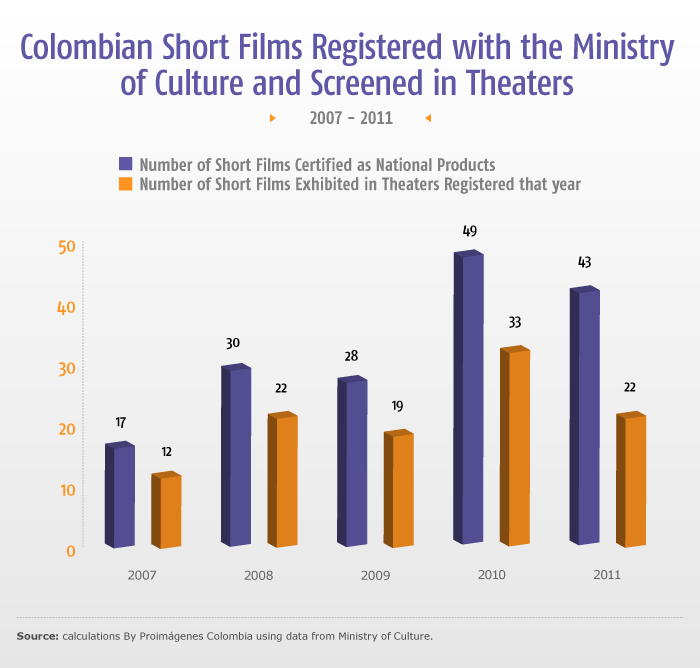
- 167 short films were registered with the Ministry of Culture’s Film Office between 2007 and 2011 to obtain certification as a national product and access investor and donor tax incentives, to apply for Film Development Fund (FDC) promotional incentives, to screen in theaters, and/or to take advantage of the Film Development Quota discount. Of these 167 films, 77% were granted audience classification status and 65% went on to screen in theaters.
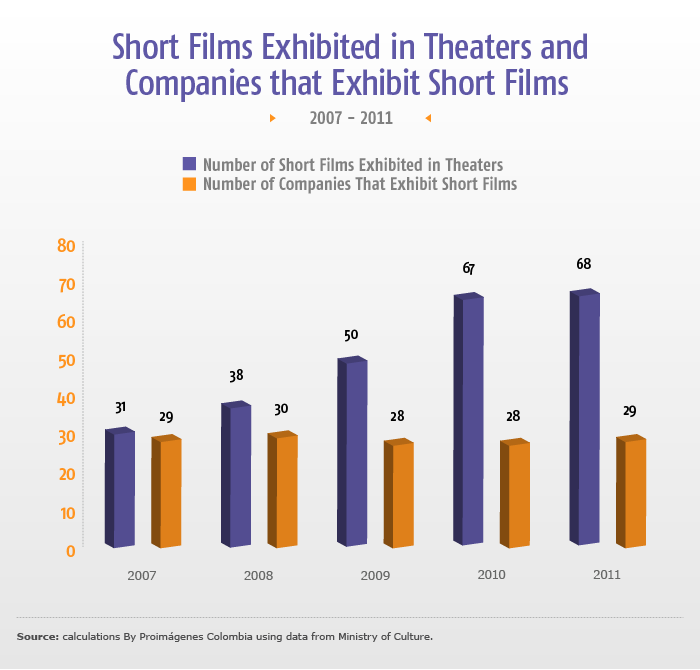
- Of the total 57 exhibitors (managing one or more theaters or exhibition spaces), 29 exhibited Colombian short films through June 2012, taking advantage of the Film Development Quota (CDC, by its Spanish acronym) discount
- Since 2007 the number of short films screened has doubled in spite of the fact that the number of exhibitors has remained the same, indicating that these exhibitors screen at least six short films yearly in order to access the CDC discount.
- CDC discounts for screening of short films have risen from $2.5 million USD in 2007 to $5 million USD in 2011.
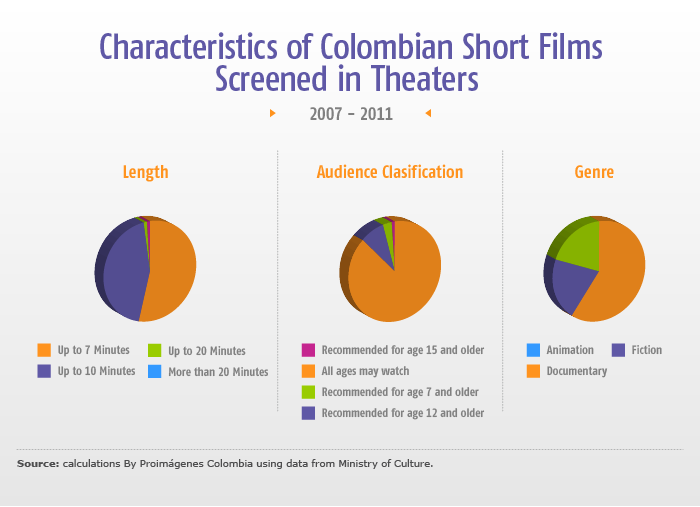
- 98% of short films screened in commercial theaters are under 10 minutes long; 88% are suitable for all ages; and 60% are documentaries.
- These are the preferred characteristics of companies that exhibit short films in order to take advantage of Film Development Quota discounts.
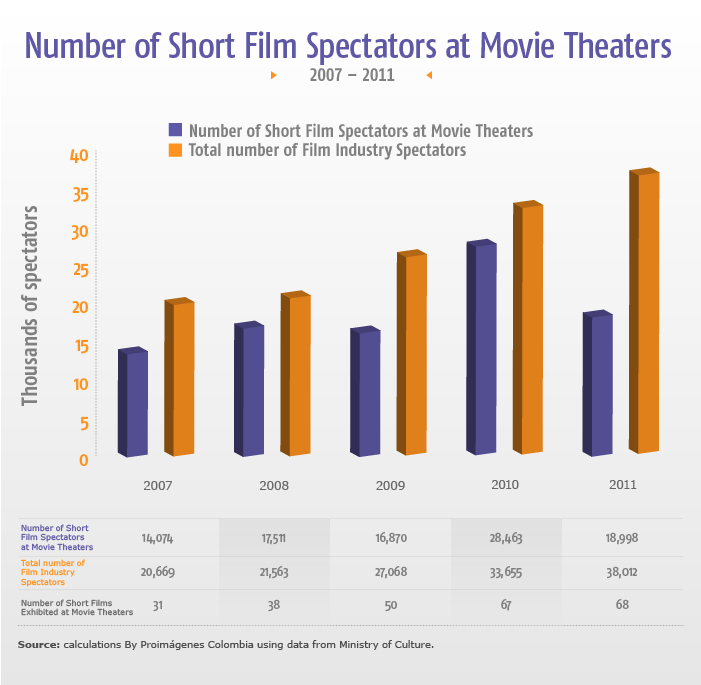
- The number of spectators at short films depends on general attendance at features exhibited in theaters on the dates when shorts are programmed.
- From 2007 to 2011, short films exhibited in theaters were seen by a total of 96 million spectators.
- 68% of total national spectators attending movie theaters between 2007 and 2011 viewed programmed short films.
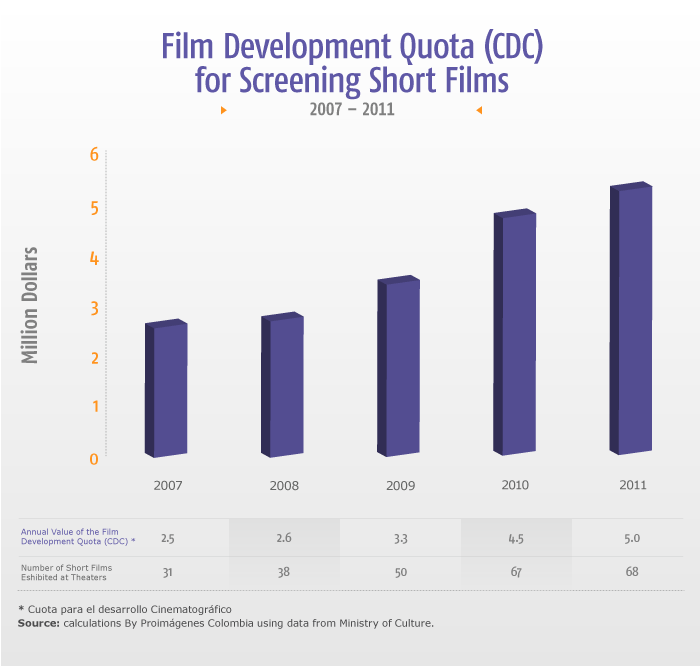
- Five of the companies that exhibit short films account for 90% of the total national market; the same percentage benefits from this discount.
- The production of short films for exclusive exhibition in movie theaters generates an economic benefit for exhibitors and a potential market niche for producers.
- From 2007 to 2011, exhibition companies saved $18 million USD, compared with the $4.5 million USD spent to produce the short films exhibited in theaters during this same period.
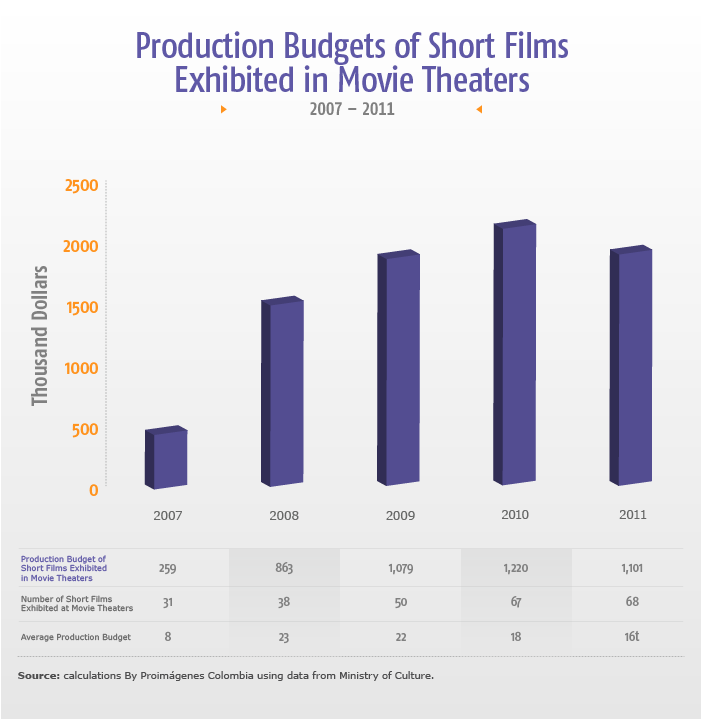
- The average production budget for a short film exhibited in theaters is $17 thousand USD.
- The average Film Development Quota discount granted companies exhibiting films was $70 thousand USD.
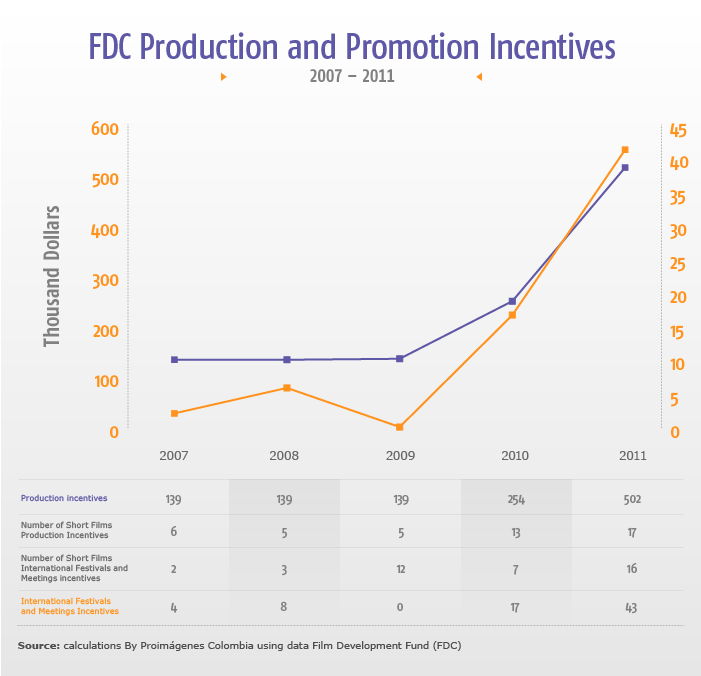
- Of all projects awarded FDC incentives during this period, five were granted national product certification in order to access festival and meeting promotion incentives; only one was exhibited in theaters and took advantage of tax incentives.
- Since the creation of the Film Law, eight short films have accessed a total of $266 thousand USD in tax incentives.
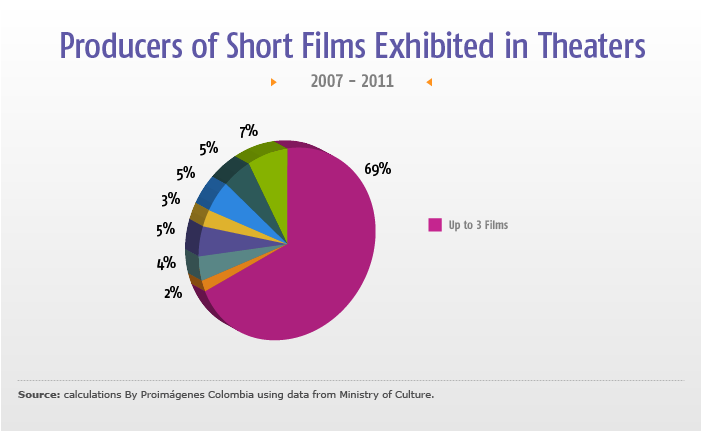
- 69% of short films exhibited in theaters were made by producers of up to three short films; the remaining 31% of these films were made by an additional seven producers.
- There is a trend towards specialization in short films designed to meet specific theater exhibition requirements.
|
